I am 1 month into my new role as an ophthalmologist-in-training. I am currently in a high-volume tertiary centre and deal with all sorts of eye emergencies that come through the door. One of THE MOST COMMON eye emergencies that I see has something to do with contact lenses.
I fear those tiny round discs that people love so much. Those transparent 12mm wide pieces of plastic can cause a lot of damage if you don’t use them correctly.
Many patients scratch their eyes when they apply them. This sends searing pain across their eyes and makes them very red, and very watery, very quickly. Most of them, however, contract infections in their eyes due to bugs hiding in the lenses.
Now I am not writing this to scare you off from the use of contact lenses, but I hope this helps make you aware of the importance of the hygienic and proper use of them.
But first… A history lesson
Contact lenses, although extremely common now, were thought about back in Leonardo Da Vinci’s time. Although this Italian was famous for his paintings, he was also a scientist and was very keen on the subject of refraction. He was convinced that if one sunk his head into a glass bowl and looked through the bottom, one may correct certain refractive errors. This is where the concept of applying a refractile object onto the surface of the eye to correct vision was first identified.
Throughout the 18th and 19th centuries, scientists tried funny things like glueing test tubes filled with water to their eyes. But it was only in the 20th century that lenses that resemble the ones we see today were formed.
Initially, only glass was used as a material to make contact lenses. As the years drew on, scientists realised the importance of making a lens that allowed the passage of gas through it. You see, the front surface of our eye is designed to derive nourishment from the air around it. It needs to be able to access the oxygen around us therefore anything preventing that, like glass lenses covering the eye, led to a very red and angry-looking eye.
To counter this, the lens material had to be altered to allow more oxygen in-flow. Kevin Toughy was an optician who first filed a patent for contact lenses made of polymethyl methacrylate. This material allowed movement of the lens over the eye which meant oxygen could enter easily.
Next, hydrogel lenses were designed which gave way to the first “daily disposable lenses in the 1980s. Dailies expanded the popularity of lenses and with that, innovation of the technology itself.
Today we have a wide berth of contact lenses available based on your needs and comforts. I say comforts but… I dont really believe it.
To understand why I am afraid of contact lenses, you need to understand a bit of anatomy first.
And now… an Anatomy lesson
I love the eye. I am in awe of the complicated mechanism that allows us to see. The eye is an organ that measures around 2.5cm transversely but is PACKED with mini-organs, muscles, cells, multiple layers, and lots of other beautiful anatomical structures without which, we simply would not be able to see.
One of the most important structures is something called the Cornea.
As light travels towards an open eye, the first surface it hits is called the cornea. It’s the completely transparent outer door to the eye that first lets the light in.
The diagram above shows what the eye would look like if I cut it straight through. The arrow indicates a magnified picture of the cornea showing you how many layers it has.
It is so essential for vision that the body has it packed with nerve endings. One touch, one tiny brush, to this part of the eye and I can assure you the person WILL jump and scream.
Contact lenses are designed to fit tight on this part of the eye.
Look closely, and you will see a thin rim sitting on top of the eye covering the cornea. It fits so well and doesn’t fall off mainly due to surface tension.
There is a problem with this kind of fit though. If worn for too long, it can suffocate the cornea.
The cornea is extremely essential for vision. It is made of fibres that are arranged such that light can pass through, unimpeded*. If the cornea’s transparency were to be compromised, we would not be able to see any longer.
Just like any other tissue in the body, the cornea needs nutrition. Most structures gain nutrition from their blood supply. The cornea, however, literally breathes from the oxygen surrounding it. That is why it is not recommended to wear contact lenses for too long. The cornea needs to breathe!
In the Clinic
When I see a patient with a problem due to their contact lenses, I guess that it’s going to be one of two things- 1. An ulcer on the eye or 2. Severe dry eyes.
One of my patients came to the clinic with an angry-looking eye. Red, and watery, they could barely keep their eye open. It took a lot of time, patience, and anaesthetic drops for me to be able to examine their eye with the slit lamp and take a closer look. I saw something that looked like this:
Do you see how their pupil is covered by the ulcer? We treated the patient with an intensive antibiotic regimen that involved waking up every two hours to get a drop in for 48 hours at least.
In most cases, the patients have either slept in their lenses (meaning their corneas are squeezed of oxygen for way too long), swam or showered in their lenses (meaning dangerous bugs in the water find a nice pocket to sit and grow on a defence-less cornea.
A lot of the population also suffer from severe dry eyes due to the lenses. They sit tight on the cornea and don’t allow the tear film to spread across the surface. This leaves the eye feeling irritated, itchy, and uncomfortable.
When I put a drop of staining dye and examine the surface using a microscope, I see something that looks like this:
Those dots indicate all the small pits created on the cornea due to dryness. A patient with an eye like that will definitely have blurring of their vision.
Treat them with the respect they deserve
The purpose of this article was not to scare you. Disclaimer to all the optometrists and contact lens lovers of the world: I am not a hater. I just…. don’t like them!
Jokes aside, I believe it’s important to give them some respect. Yes, they are easy to wear, some are disposable, and it’s an item often worn to look better but you simply cannot treat them like another piece of make-up.
If the instructions say- wear not longer than 8 hours- then take them off before the 8-hour mark. Or, you will be intentionally choking your cornea.
DONT shower with them on. Please. One of the main reasons why we say this because water can harbour a type of organism called Acanthamoeba.
It looks like this:
And it can do this:
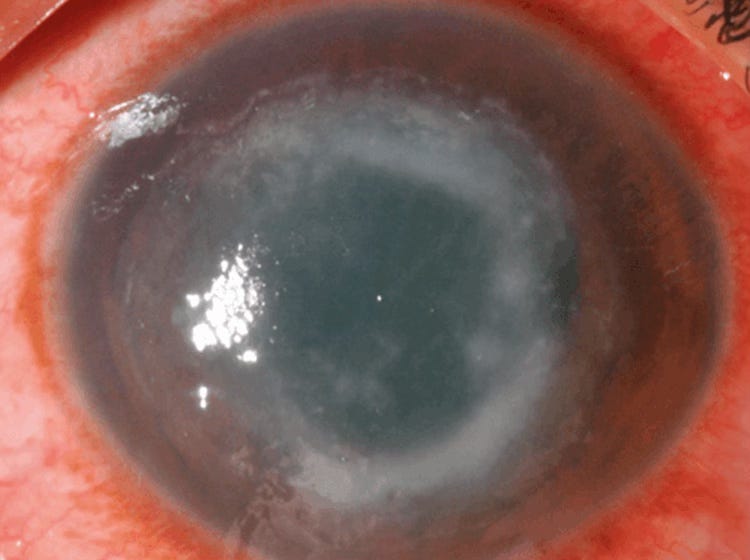
It is also really difficult to treat and almost always leads to some sight loss.
If you feel like your eye is uncomfortable, looking red, or inflamed- stop wearing them and go back to your optometrist.
Clean the lenses every day, like you would brush your teeth.
And finally… please do not wear the lenses when you have an eye infection!
To conclude…
Contact lenses scare me because of the volume of “gone wrong” I see in the clinic. It’s not necessary that this may happen to you, and it is not at all necessary to stop wearing them altogether! I said this to a patient the other day and I think it applies to today’s article also:
I am not in a position to tell you what to do, and what not to. All I ask is that you make an informed decision. This means, you take the time to understand all the risks involved before starting anything and you take the responsibility to do whatever you can to mitigate those risks.
Happy Reading :)






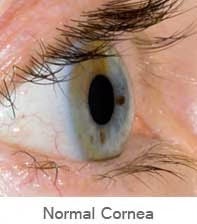
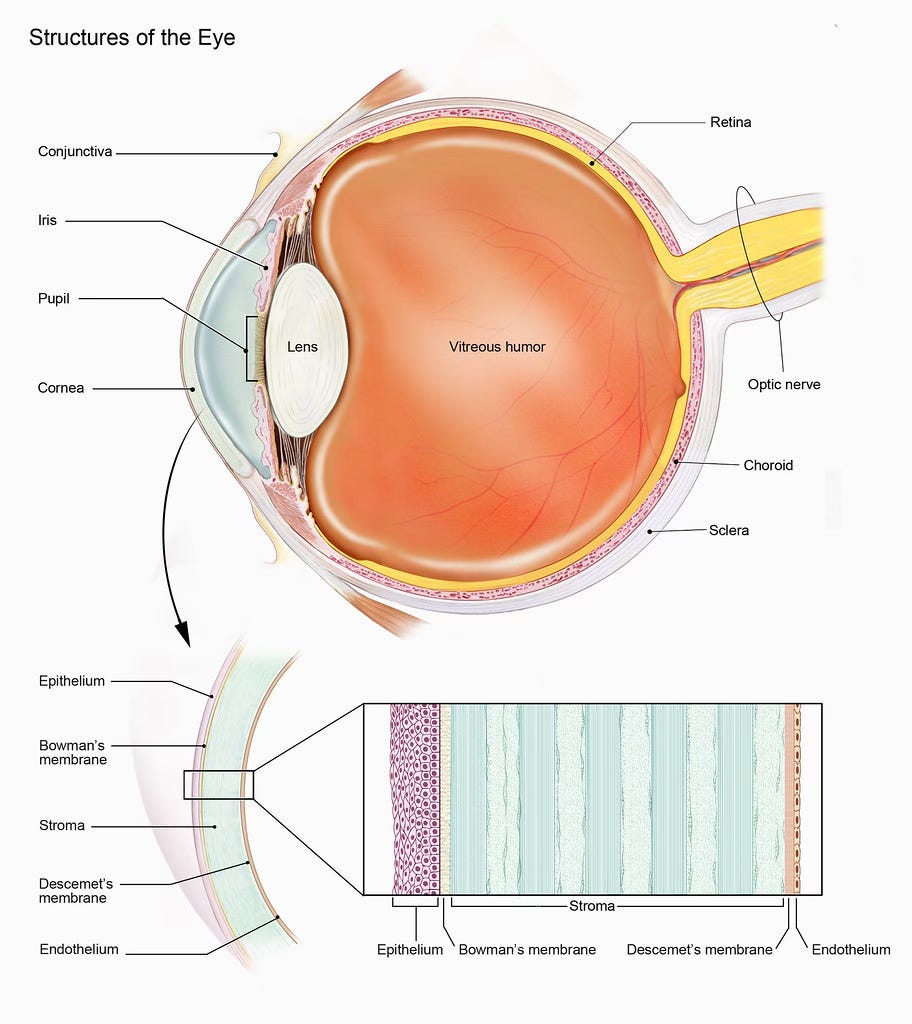

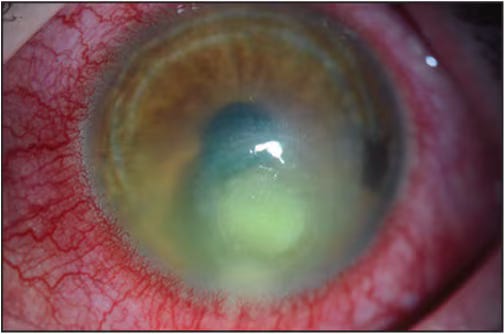
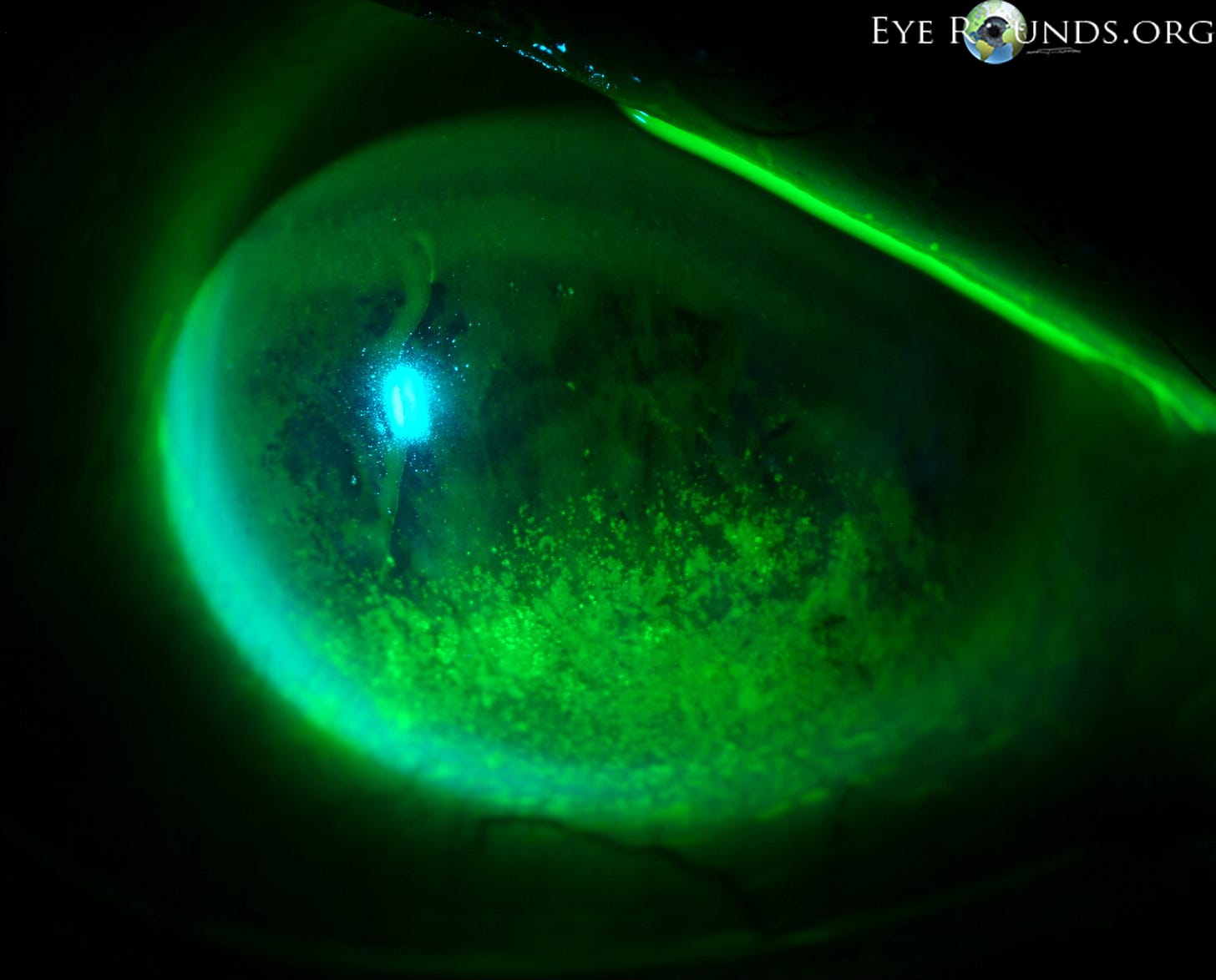

Congratulations on your new job 👏. A really well thought and explained article. The pictures definitely gives shrill though.